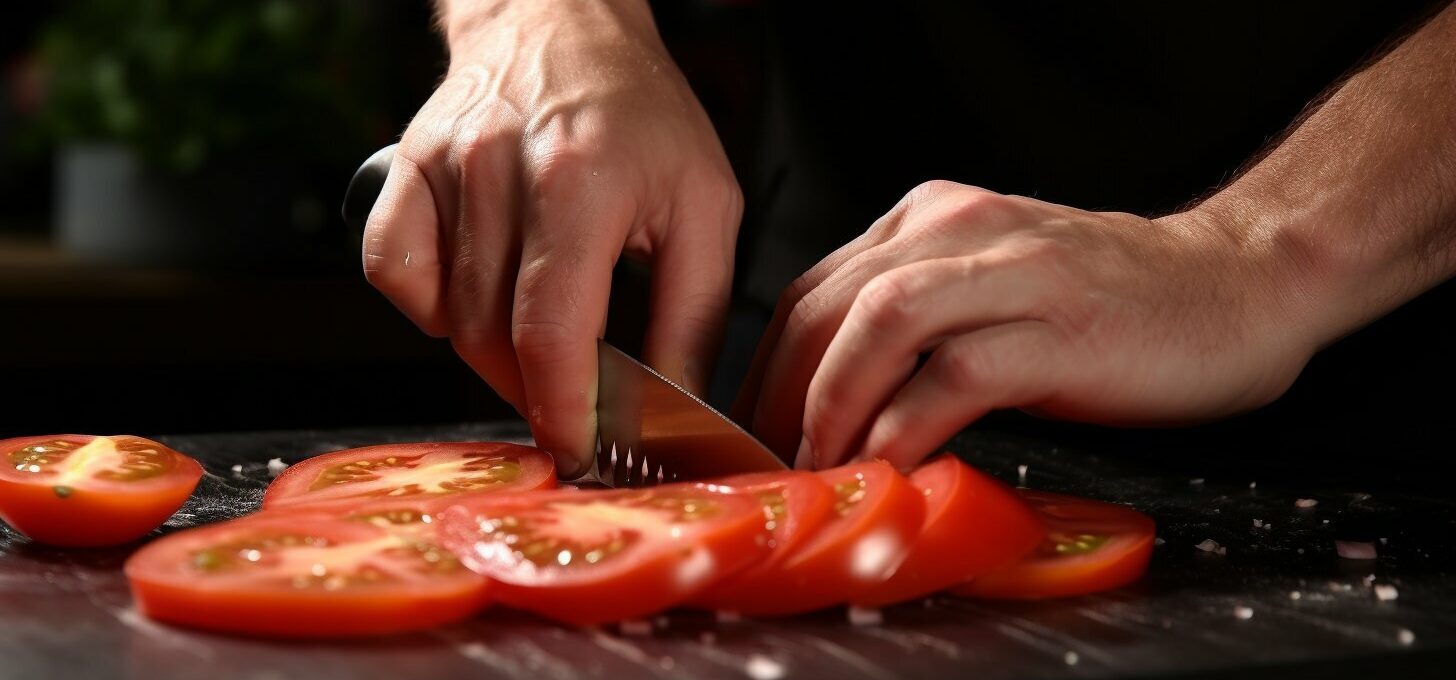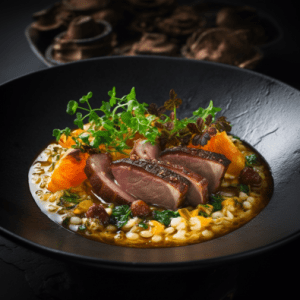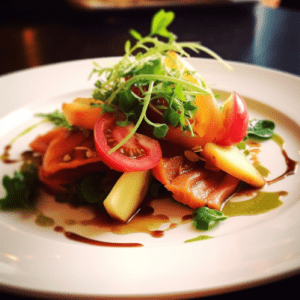Please note that some of the links on this website are affiliate links. I will earn a commission if you decide to make a purchase after clicking through the link. As an Amazon Associate I earn from qualifying purchases.
A chef knife is an essential tool in any kitchen, but to get the most out of it, you need to know how to use it properly. Precision slicing with a chef knife requires knife control and proper technique, as well as the right knife for the job. In this article, we will provide tips and techniques for using your chef knife to slice with precision and maintain control.
Whether you’re a professional chef or a home cook, these tips will help you improve your knife skills and take your cooking to the next level. From choosing the right chef knife to mastering advanced knife skills, we’ll cover everything you need to know to slice with precision and maintain control.
Choose the Right Chef Knife for the Job
When it comes to precision slicing, choosing the right chef knife is crucial. The blade length, handle, and weight of a knife can all affect the quality and ease of your cuts. Here are some factors to consider when selecting a chef knife:
| Blade Length | The length of the blade should match the size of the food you are slicing. A shorter blade is better for small items like fruits and vegetables, while a longer blade is best for larger items like meats. |
|---|---|
| Handle | The handle should fit comfortably in your hand and provide a good grip. Look for a handle made of a durable material like wood or plastic that won’t slip when your hands are wet. |
| Weight | The weight of the knife will affect how easily you can control it. A heavier knife can provide more power and stability, while a lighter knife may be easier to maneuver for precision cuts. |
It’s also important to consider the type of chef knife you need. Japanese knives, for example, are generally lighter and have thinner blades for precision cutting, while Western knives are heavier and have thicker blades for more power.
Choosing the right chef knife for the job can make all the difference in the quality of your cuts. Take the time to consider these factors when selecting your knife and you’ll be well on your way to achieving precision slicing with ease.

Proper Knife Grip and Technique
Proper knife grip and technique are essential for achieving precision when slicing with a chef knife. Follow these steps for optimal grip and technique:
- Hold the handle: Place your index finger and thumb around the handle at the bolster (the thick part of the blade where it meets the handle).
- Position your other fingers: Curl your remaining fingers around the handle for stability.
- Aim for a 20-degree angle: Hold the knife at approximately a 20-degree angle, depending on the thickness of the item being sliced.
- Use a pinch grip: Pinch the knife with your thumb and index finger above the blade for greater control.
- Use your other hand: Use your other hand to hold the food steady, keeping your fingers curled under for safety.
Common mistakes to avoid include holding the handle too tightly, using your wrist to slice instead of your arm, and using too much force.

Hand Position
The placement of your hand on the blade can also affect your technique. To achieve optimal hand position:
- Keep your hand above the blade: Avoid placing your hand on the back of the blade, as this can cause unnecessary strain and reduce control.
- Use a forward grip: Grip the knife with your index finger and thumb above the blade, and the remaining fingers below the handle.
- Use a claw grip: Curl your fingers inward and use your knuckles to guide the blade, keeping the tips of your fingers tucked under for safety.
With the proper grip and hand position, you can achieve greater control and precision when slicing with your chef knife.
Basic Slicing Techniques
When it comes to mastering precision slicing with a chef knife, it’s essential to understand the three basic slicing techniques: the rocking motion, push cut, and pull cut.
The rocking motion is ideal for chopping vegetables and herbs. To execute it, place the tip of the blade onto the cutting board and rock the blade back and forth while slicing through your ingredient. This technique is especially important when making dishes like salsa or guacamole.
The push cut is best used on firmer ingredients like meats, cheese and carrots. To execute, place your ingredient onto the cutting board and hold it firmly with your non-knife hand while pushing the blade down through the ingredient in a forward motion. This technique is particularly useful for cutting through tough gristle or skin.
The pull cut is ideal for softer ingredients like bread or tomatoes. To execute it, place the blade on the top of the item and pull the blade towards you while applying slight downward pressure. This technique helps to avoid crushing the ingredient when slicing.
Remember to practice each technique slowly at first to develop the proper and safe habits. Use a steady and controlled motion, and keep the knife blade close to your fingers to maintain control and precision.

Expert Tip: When using these techniques, try to keep the tip of the blade in contact with the cutting board at all times, as this will enhance the control and precision of your cuts.
Applying Forward Pressure for Control
One of the most important techniques for achieving precision slices with a chef knife is applying forward pressure. This technique involves pushing the blade forward as you slice, maintaining control and preventing the knife from slipping.
To execute this technique properly, start by placing your non-dominant hand on top of the blade, near the base. This will help you maintain control and guide the knife as you slice. Next, position the blade at a slight angle and use your dominant hand to apply pressure as you slice forward with a rocking motion.
It’s important to maintain consistent pressure as you slice, without over-exerting yourself or pressing too hard. This technique may take some time to master, but with practice, you’ll soon be able to achieve perfectly sliced fruits, vegetables, and meats.

Remember to maintain proper hand position and grip throughout the slicing process. This will help you maintain control and prevent accidents. Always cut away from your body and keep your fingers and other body parts away from the blade.
Maintaining Knife Control
Proper knife control is essential for achieving precise and consistent slices with your chef knife. In addition to proper grip and technique, there are a few additional tips and techniques that can help you maintain control over your knife.
One important technique is to apply forward pressure when slicing. This means using your non-knife hand to gently guide the food forward as you make the cut. This helps maintain control and precision, and can be especially helpful when working with delicate ingredients.
To apply forward pressure, start by placing the fingertips of your non-knife hand on top of the food. Use a gentle, but firm pressure to guide the food forward as you slice with the knife. Make sure to keep your fingers curled under for safety.
Another key to maintaining knife control is to avoid using too much force when cutting. Instead, let the weight of the knife do the work for you. This will help prevent slips and ensure that your slices are even and consistent.
Finally, always prioritize knife safety when working in the kitchen. Keep your fingers curled under when slicing, and never leave a knife unattended. When storing your knife, make sure to keep it in a designated spot, such as a knife block or magnetic strip, to prevent accidents.

Advanced Knife Skills
Mastering advanced knife skills is essential for any chef looking to take their cooking to the next level. While basic slicing techniques are foundational, advanced skills such as julienning and chiffonading can elevate your dishes and impress your guests.
Julienning involves cutting food into thin matchsticks, perfect for salads, stir-fries, and garnishes. To julienne, begin by cutting the food into rectangular blocks, then slice the blocks into thin slices. Finally, slice the slices into thin matchsticks. Maintaining even thickness throughout the process is key to achieving the perfect julienne.
Chiffonading, on the other hand, involves cutting leafy greens or herbs into thin, ribbon-like strips. To chiffonade, stack the leaves on top of each other, then roll them up tightly. Use a sharp chef knife to slice thinly across the rolled leaves.
When practicing advanced knife skills, it’s important to remember proper knife technique and handling. Keep your hand steady and maintain control over the blade as you slice. With practice, you’ll soon be able to execute these techniques with ease.

“Mastering knife skills is the foundation of all cooking.” – Chef Charlie Trotter
Sharpening and Maintaining Your Chef Knife
Keeping your chef knife sharp and well-maintained is crucial for achieving precise cuts and ensuring your safety while using it. Here are some tips on how to sharpen and maintain your knife:
Sharpening Your Chef Knife
The first step in maintaining your chef knife is to sharpen it regularly. There are several methods you can use to sharpen your knife, including using a sharpening stone, honing steel, or an electric sharpener.
A sharpening stone is a traditional and effective method of sharpening your knife. To use a sharpening stone, place it on a stable surface and hold the knife at a 20-degree angle against the stone, using a circular motion to sharpen the blade. Repeat on the other side of the blade until it is sharp.
A honing steel is used to straighten the blade and maintain its sharpness between sharpenings. Hold the honing steel vertically with the tip resting on a stable surface, and hold the knife at a 20-degree angle against the steel. Draw the blade down the steel from base to tip, repeating on the other side of the blade.
An electric sharpener is a convenient option for sharpening your knife quickly. Simply turn on the sharpener and run the blade through the designated slots.
Maintaining Your Chef Knife
In addition to sharpening your knife, it’s important to maintain it properly to ensure its longevity. Here are some tips:
- Clean your knife after each use with warm soapy water and dry it thoroughly with a clean towel.
- Avoid putting your knife in the dishwasher or leaving it soaking in water, as this can cause damage and rust.
- Store your knife in a knife block or on a magnetic strip to protect the blade and prevent accidents.
- Regularly oil the blade and handle to prevent rust and maintain its appearance.
By following these tips for sharpening and maintaining your chef knife, you can ensure that it stays sharp and in good condition for years to come. A well-maintained chef knife is an essential tool for any kitchen, and with proper care, it can deliver consistent and precise cuts every time.

FAQ
If you’re new to using a chef knife, or simply looking to improve your skills, you may have some questions. Here are some of the most commonly asked questions about using and maintaining a chef knife:
Q: Is it important to use a sharp knife?
A: Absolutely! A dull knife is not only frustrating to use, but can also be dangerous. A sharp knife allows for more control and precision, and reduces the risk of slipping and cutting yourself.
Q: How often should I sharpen my knife?
A: This can vary depending on how often you use your knife, but as a general rule, you should sharpen your knife at least once every few months. You can use a sharpening stone or an electric sharpener to get the job done.
Q: Do I need to hone my knife?
A: Yes, honing your knife is an important part of maintenance. It helps to realign the blade and keep it sharp between sharpenings. You should hone your knife every time you use it.
Q: How should I store my chef knife?
A: You should never put your chef knife in a drawer with other utensils, as this can damage the blade. Instead, store it in a knife block or on a magnetic strip. Make sure the blade is protected and not touching anything else.
Q: What’s the best way to hold a chef knife?
A: Grip the handle firmly with your dominant hand, and place your index finger and thumb on either side of the blade where it meets the handle. This will give you the most control over the knife.
Q: What’s the best way to clean a chef knife?
A: Always wash your knife by hand, using warm, soapy water and a non-abrasive scrubber. Dry it immediately with a towel to prevent rusting. Never put your chef knife in the dishwasher.
By following these tips and techniques, you’ll be well on your way to becoming a master of your chef knife.











